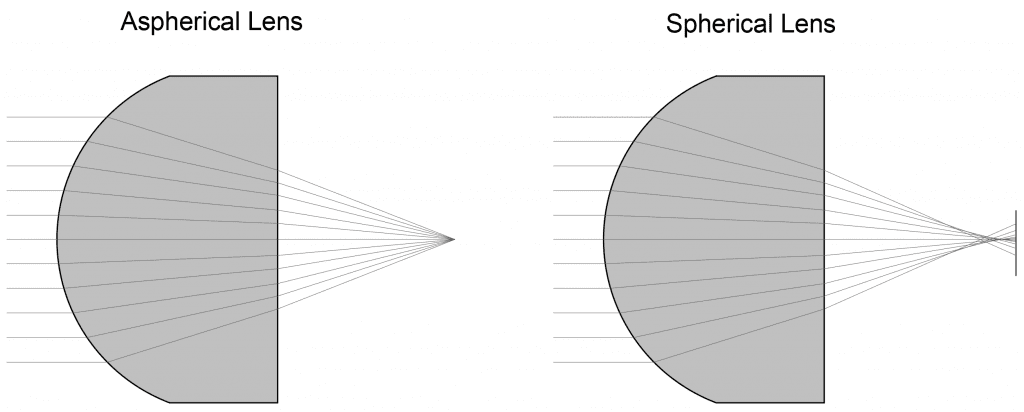Key Takeaways
- Advantages of Aspheric Lenses include reduced aberration and improved peripheral vision compared to spherical lenses, leading to clearer and sharper vision across the entire field of view.
- Aspheric lenses also offer a thinner and slimmer profile, enhancing both visual comfort and aesthetic appearance.
- They maintain high luminosity performance, even at high prescriptions, ensuring clear vision without compromising optical quality.
- Additionally, aspheric lenses are lightweight and impact-resistant, providing comfort and safety for wearers during extended use.
Exploring the Advantages and Disadvantages of Aspheric Lenses
Aspheric lenses (ASP lenses) offer significant advantages over traditional spherical lenses due to their unique shape and optical properties. Let’s delve into these advantages and also consider some of their disadvantages, as discussed in the provided articles.

Advantages of Aspheric Lenses:
Optical Advantages: Aspheric lenses are designed to reduce aberrations, especially spherical aberration. Spherical aberration is a distortion that occurs when light passes through a spherical surface, causing blurriness and reduced image quality. These lenses focus light to a single point, regardless of the entry angle, resulting in clearer and sharper vision.
- Improved Peripheral Vision: They provide better peripheral vision compared to spherical lenses. This means wearers can see clearly not only in the central field of view but also towards the edges of the lens, enhancing overall visual comfort and safety.
- Thinner and Slimmer Profile: These lenses can be designed with flatter base arcs, which make them thinner and slimmer. This aesthetic advantage not only improves the appearance of the wearer but also reduces peripheral magnification, preventing distortions that can make the eyes appear larger or smaller than they actually are.
- High Luminosity Performance: Even at high precisions (+7.00D-22.00D), they maintain clear vision. Traditional spherical lenses may not be able to eliminate aberrations at such high prescriptions, but aspheric designs can achieve better optical quality.
- Lightweight and Impact-Resistant: They are typically lighter, making them more comfortable to wear for extended periods. Despite their thinner profile, they maintain excellent impact resistance, ensuring safety for the wearer.
Disadvantages of Aspheric Lenses:
- Smaller Light Area: These lenses have a relatively smaller light area, and when the eye rotates, objects viewed through the lens’s edge may appear slightly blurred. This limitation can reduce the visual range of the line of sight.
- Spherical Eye vs. Aspheric Lens: The human eyeball is naturally spherical. When the eye rotates towards the edge, objects seen through an aspheric lens may appear protruding. This can take some time for wearers to adapt to.
Conclusion
In summary, the significance and advantages of aspheric lenses are primarily related to their ability to correct optical aberrations, provide clearer and sharper vision, and offer improved peripheral vision. They also come with aesthetic benefits such as a slimmer profile and better appearance. However, they have some limitations, including a smaller light area and potential adjustments needed for individuals used to spherical lenses. Advances in manufacturing have made aspheric lenses more affordable and versatile, allowing them to replace multiple spherical lenses in various applications, resulting in cost-effective and high-performance optical systems.
At Avantier, we manufacture a wide variety of aspheric lenses for applications from smartphones to lasers and fiber optics, from research and industry to medicine. If you have more questions about aspheric lenses, don’t hesitate to contact us. Our experienced optical designers are always available to discuss a custom order.
GREAT ARTICLE!
Share this article to gain insights from your connections!




